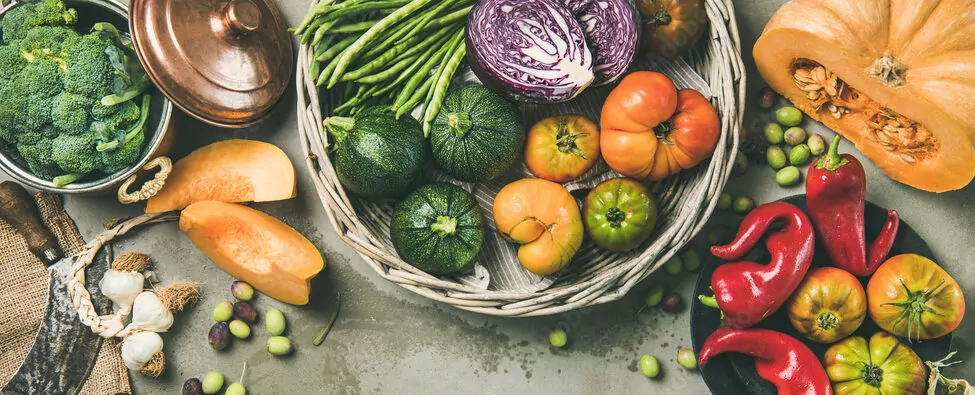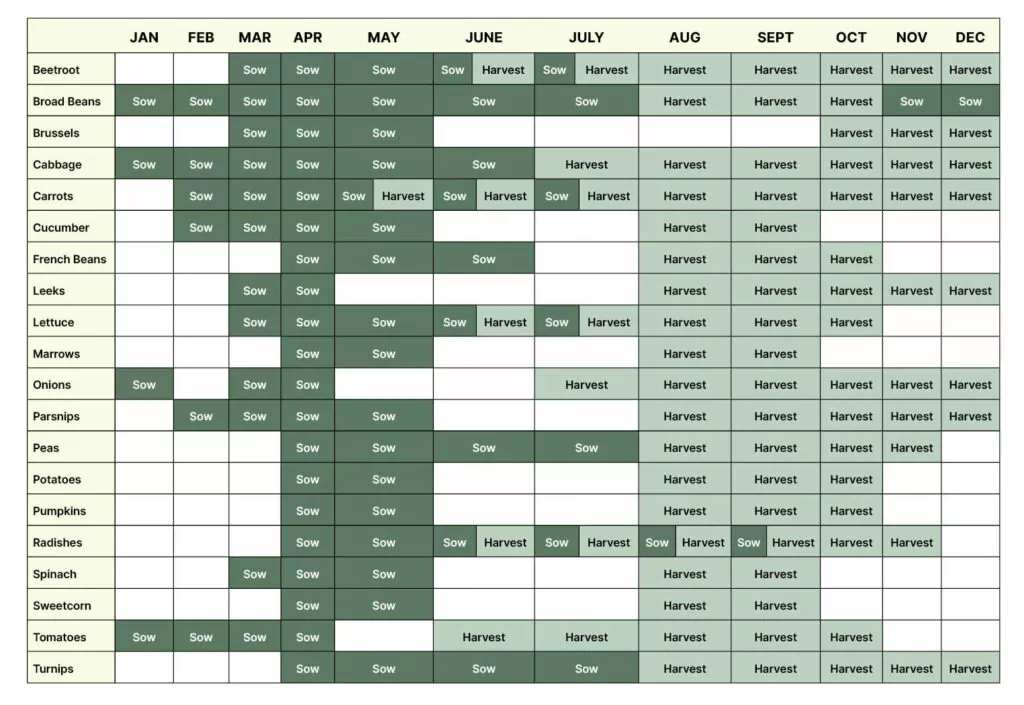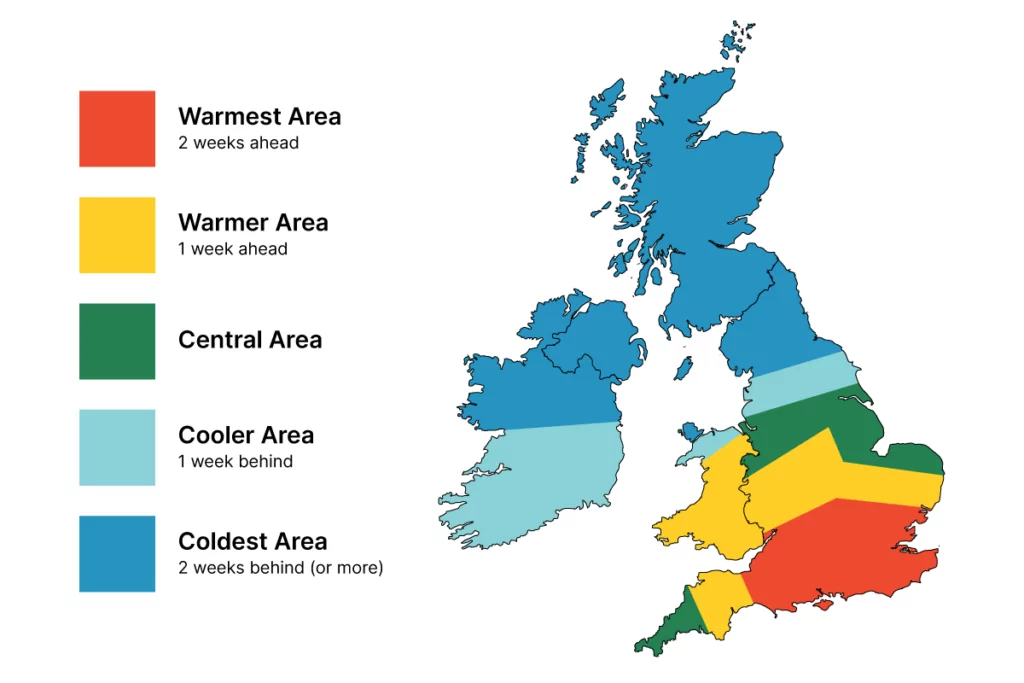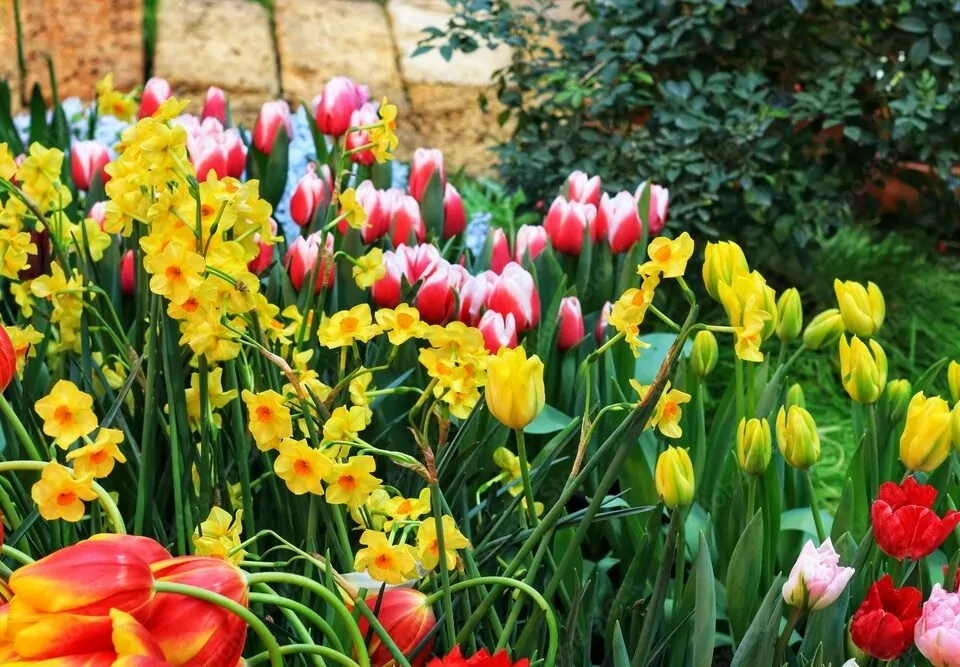
Autumn planting allows you to make the most of your garden by harvesting vegetables and plants that can flourish during the autumn season. Planting autumn veggies is not only a great way to lower your carbon footprint and eat locally sourced produce, it can also help prep your garden for spring. Read on to find out which vegetables to plant in October in addition to other autumn months!
Why Plant in Autumn?
There are many great reasons to plant vegetables in the autumn. The first reason is that the soil is still warm from the summer season and helps promote healthy root growth. Root growth is important for anchoring plants and vegetables and helping transport nutrients, oxygen, and water. Second, autumn weather is neither too hot nor too cold, so you can greatly reduce the effect of extreme heat or cold on newer, more vulnerable plants. Third, you can take advantage of increased rain in autumn, which will help your plants establish stronger roots before the more severe winter weather comes in. Finally, spring and summer can bring many more pests that aren’t as prevalent in autumn. This will help set the stage for successful planting and enjoying of your autumn vegetables.
Vegetables to Plant in October – Which To Choose?
There are a wide variety of options for planting autumn vegetables, which we divide into short-term, medium-term, and long-term crops. Each term has its own schedule for sowing and harvesting.
Short-term vegetables to plant
- lettuce
- carrots
- spinach
- cucumber
- radish
- turnips
- peas
- beetroot
- french beans
- pumpkin
Medium-term vegetables to plant
- carrots
- tomato
- cabbage
- onions
- peas
- sweetcorn
- broad beans.
Long-term vegetables to plant
- potatoes
- broccoli
- leeks
- brussel sprouts
- parsnips
When to plant?
Each vegetable will have its own set of guidelines on when to plant. Check out this chart to help easily navigate through sowing and harvesting timelines.

Source: TTS Group
Where to plant?
There are two main factors to keep in mind when planting vegetables in the autumn: the weather and your location. The weather in the UK can vary depending on your location. If you’re located in the northern part of the UK, then you’ll want to take into consideration that those areas generally run colder and are two weeks behind, temperature-wise. The cooler area, which is in between the north and central parts of the UK, is about one week behind, temperature-wise. The central area tends to be more standard as far as planting advice timelines are concerned. Finally, the southernmost region is generally two weeks ahead, and the area in between the southern and the central regions is about one week ahead. Finally, you should also keep in mind that there can sometimes be micro-climates that you need to adjust for, like frost pockets.

Source: Allotment & Gardens
To prep your garden, be sure to remove underperforming garden crops and weeds, which steal moisture and nutrients from new young plants. You’ll also want to plant about a three-inch layer of compost to get your autumn planting off to a great start.
Growing flowers and trees in autumn

According to new research from the Royal Horticultural Society in an article on House Beautiful, autumn is a particularly good season for planting evergreens, tulips, and daffodil bulbs. The autumn weather allows for these plants to grow new roots much better than they would in the springtime, due to spring’s weather fluctuations. By planting in autumn, you can take advantage of the higher levels of rain, thereby saving water (a critical issue) and lowering your carbon footprint.
Just because summer is over doesn’t mean that your love for horticulture needs to stop. Instead of viewing autumn as the bridge between summer and spring, you can take advantage of the uniqueness of the season to grow delicious produce in the comfort of your own garden – what’s more locally sourced than that?
Want to get your autumn veggie game on? Book a Tasker today!







